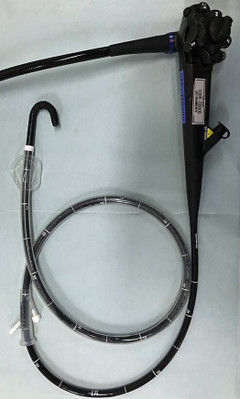Post written by Yuki Tanisaka, MD, PhD, from the Department of Gastroenterology, Saitama Medical University International Medical Center, Saitama, Japan.

ERCP is considered challenging in patients with surgically altered anatomy. Procedural outcomes using a conventional endoscope have not been satisfactory. A short-type single-balloon enteroscopy (short SBE)–assisted ERCP has been reported as useful in patients with surgically altered anatomy.
Studies with a large number of cases or multicenter studies are warranted to evaluate the efficacy of short SBE–assisted ERCP. Hence, we conducted a nationwide cohort study to evaluate the efficacy of short SBE–assisted ERCP and to clarify the factors affecting procedure results.
This multicenter, retrospective study was conducted at 8 tertiary referral care centers in Japan. Overall, 1318 patients were included in this analysis. The enteroscopy (reaching the target site), cannulation, and total procedural success rates were 87.9% (95% confidence interval [CI], 86.1%-89.6%), 87.0% (95% CI, 84.9%-88.8%), and 74.9% (95% CI, 72.5%-77.2%), respectively. Adverse events occurred in 7.7% of patients (95% CI, 6.4%-9.3%). Multiple logistic regression analysis indicated that Roux-en-Y reconstruction, pancreatic indication, and malignancy were factors affecting the total procedural failure.
This large-scale study proved that short SBE–assisted ERCP in patients with surgically altered anatomy was effective. Moreover, it clarified factors affecting procedure results. Proficiency with alternative treatment techniques (such as EUS-guided biliary drainage [EUS-BD]) is required in difficult cases.
This is the largest cohort study evaluating this population and procedure. Although short–SBE assisted ERCP proved its usefulness and safety, it was difficult to complete the intended procedures in patients with surgically altered anatomy. Short–SBE could be the first choice in such cases, but other modalities (such as percutaneous transhepatic biliary drainage and EUS-BD) are also needed to complete the procedures.

Short-type single-balloon enteroscope (SIF-H290S; Olympus Medical Systems, Tokyo, Japan).
Read the full article online.
The information presented in Endoscopedia reflects the opinions of the authors and does not represent the position of the American Society for Gastrointestinal Endoscopy (ASGE). ASGE expressly disclaims any warranties or guarantees, expressed or implied, and is not liable for damages of any kind in connection with the material, information, or procedures set forth.
